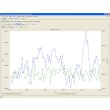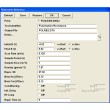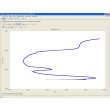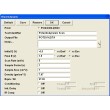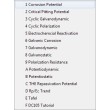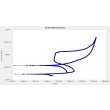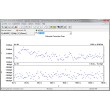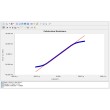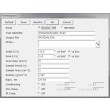The DC Corrosion Techniques Software provides proven electrochemical techniques to investigate corrosion problems, extract mechanistic information, and predict long-term corrosion rates from an array of experiments. The software runs standard DC corrosion tests such as polarization resistance, cyclic polarization, and galvanic corrosion in addition to a number of others.
Software
Overview
Overview
The DC Corrosion Techniques Software is a powerful package containing a wide assortment of electrochemical experiments for corrosion evaluation. With the click of a button, users can run standard corrosion tests such as polarization resistance, cyclic polarization and galvanic corrosion. Experiments can easily be strung together using the Gamry Sequence Wizard to create automated sequences of experiments for more efficient corrosion testing. This software is compatible with all Gamry Potentiostats. Analysis is carried out with the Gamry Echem Analyst in order to extract long-term corrosion rates and evaluate material performance. For higher experimental throughput, experiments can be multiplexed with the ECM8 Electrochemical Multiplexer.
Features
Corrosion Analysis with Echem Analyst
DC Corrosion includes analysis scripts that work with Gamry’s Echem Analyst software to appropriately display the results of corrosion measurements. For each experiment users have access to tools for Tafel fitting, polarization resistance, integration, min/max, and post-run iR correction.
Increased Throughput
DC Corrosion includes special experiment scripts designed to maximize the potential of the ECM8 Electrochemical Multiplexer. These experiments allow users to run long-term experiments across 8 electrochemical cells sequentially. Corrosion potential, galvanic corrosion, Rp/Ec trend, galvanodynamic, potentiodynamic and potentiostatic are specifically designed to increase throughput by utilizing the ECM8, however, users can build a custom battery of tests to work with with multiplexer using the Gamry Sequence Wizard.
System Requirements
- Gamry PCI4/Series G, Reference, or Interface Family Instrument
- Microsoft® Windows™ XP SP3/Vista/7/8/10 (32-bit or 64-bit)
Experiments
Polarization Resistance
ASTM G 59. Rapid non-destructive corrosion rate measurement.
Tafel Scan
Comprehensive kinetic parameters and corrosion rate measurements.
Potentiostatic
General purpose current-time transient measurements with a constant potential applied.
Galvanostatic
General purpose voltage-time transient measurements with a constant current applied.
Potentiodynamic
ASTM G5. Wide scan standard technique for corrosion region studies.
Electrochemical Potentiokinetic Reactivation
Measures sensitization.
Rp & Ecorr Trend
Measure time dependent corrosion rates, inhibitor screening, and testing.
Cyclic Polarization
ASTM G 61 and F 2129. Measurement of Pitting and Protection Potentials as in ASTM G61. ASTM F 2129 addresses the use of Cyclic Polarization to characterize medical devices.
Critical Pitting Potential
ASTM F 746. A well-accepted experiment to determine pitting potential.
Galvanic Corrosion
Measurement of dissimilar metal coupling and zero resistance ammetry.
Galvanodynamic
Rapid transpassive potential identification.
Corrosion Potential
Measurement of open circuit potential.
THE Repassivation Potential
ASTM G 192. Measures the repassivation potential for crevice corrosion.




